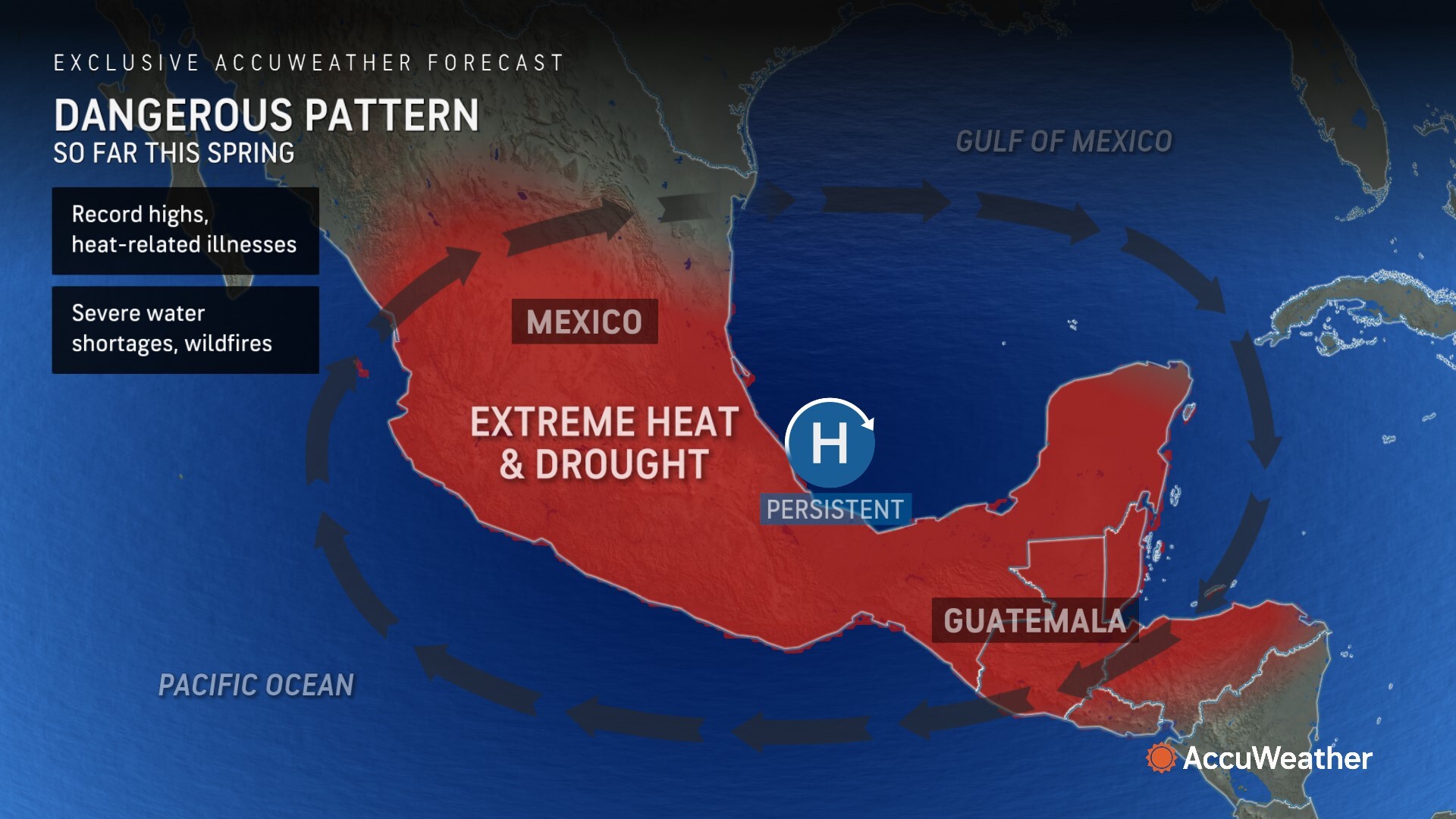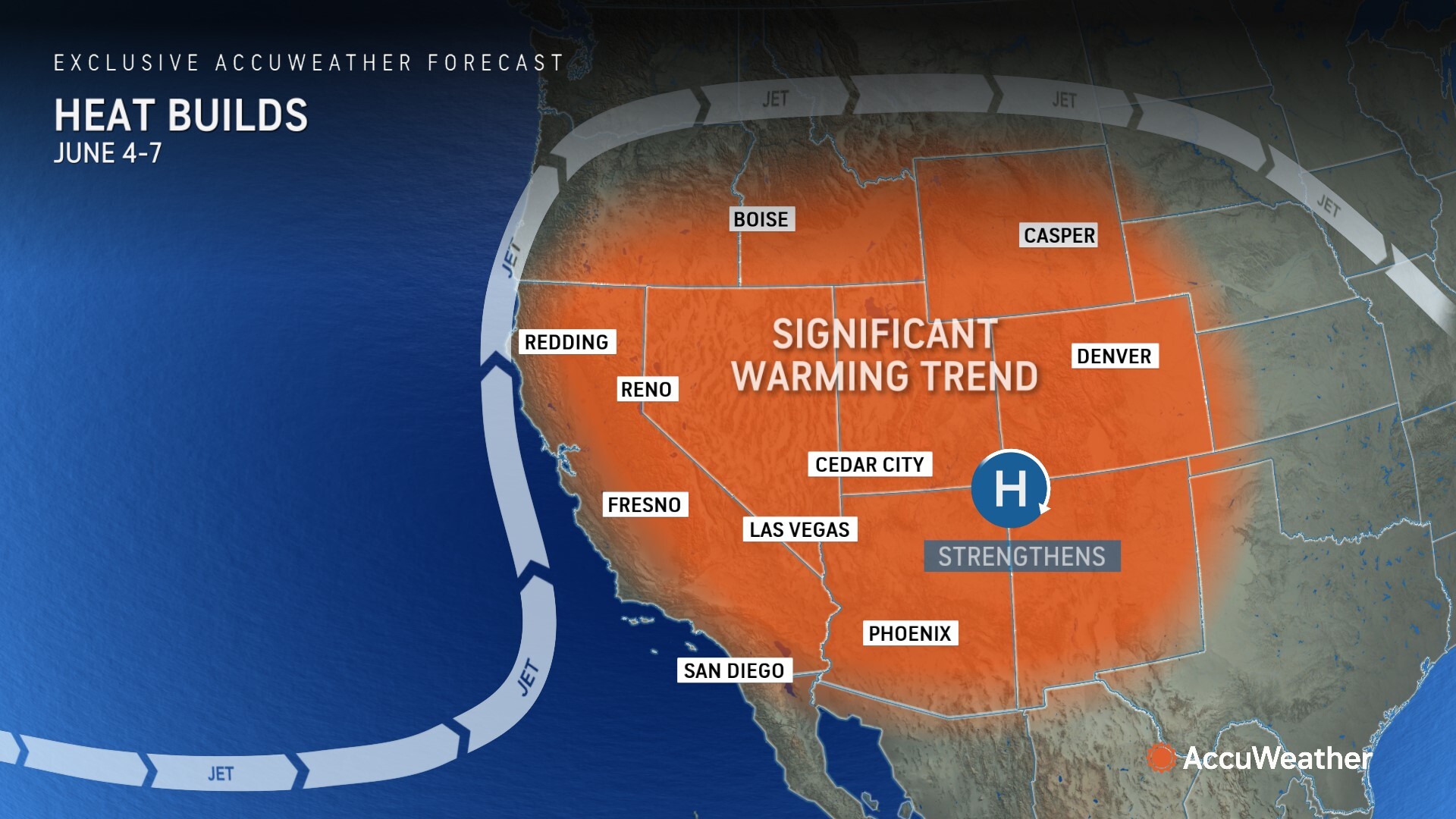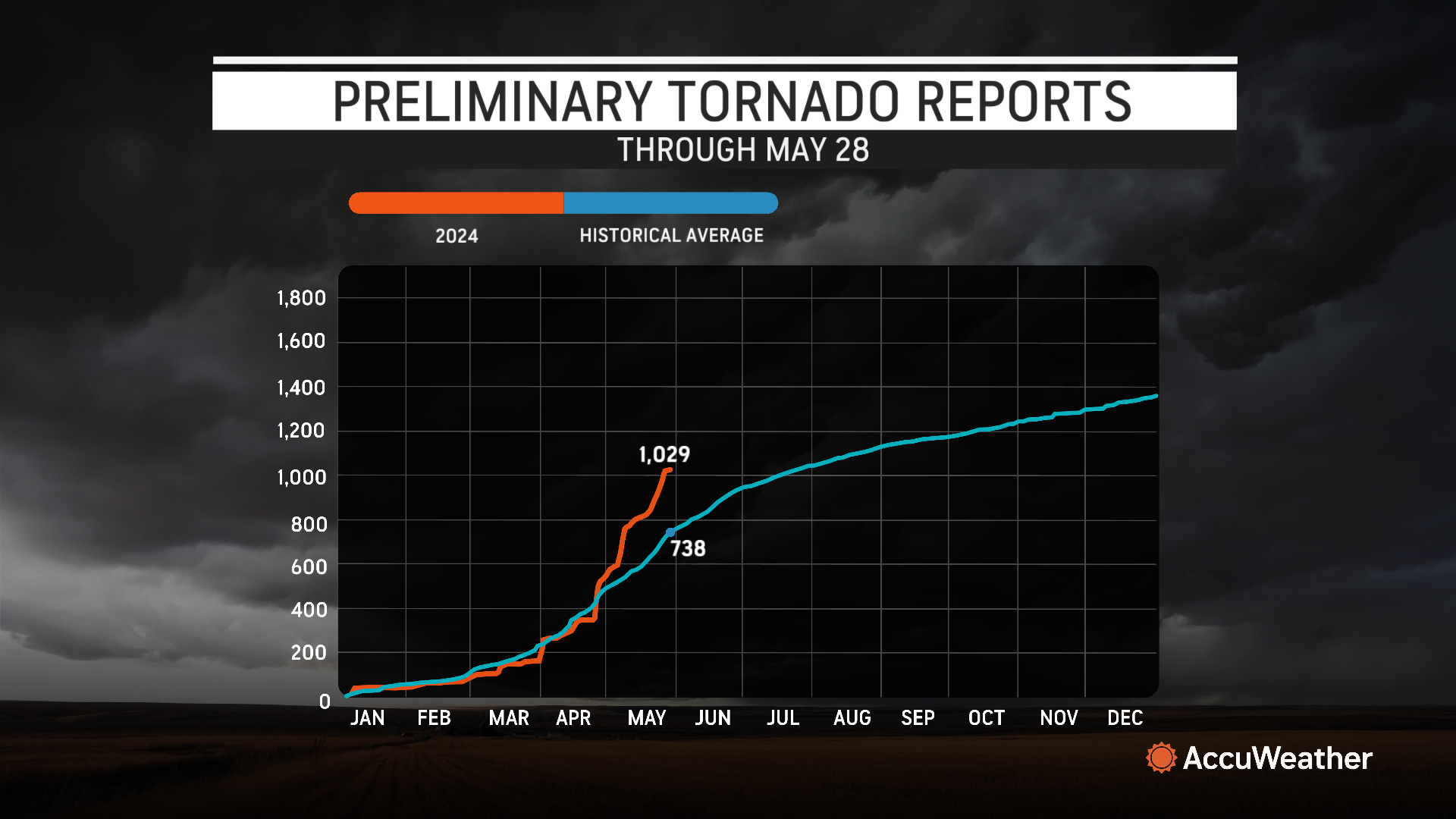AccuWeather meteorologists are available 24/7 to provide further insights and updates on evolving weather conditions. Please contact pr@accuweather.com during regular business hours, or support@accuweather.com or call AccuWeather’s Media Hotline at (814)-235-8710 at any time to arrange interviews with AccuWeather experts or to request the most updated graphics for print or broadcast.
Intense Heat Baking Mexico Will Shift Into Southwest United States
May 29, 2024
-
> The extreme heat that has been impacting Mexico will expand north to an area -
from California to Wyoming in the coming weeks
-
> Recent extreme weather along the U.S. Gulf Coast has been linked to the heat
dome over Central America -
> Corn crop in Mexico has been hit hard by extreme heat and drought
AccuWeather Global Weather Center – May 29, 2024

AccuWeather expert meteorologists say 82 percent of Mexico was experiencing conditions ranging from abnormally dry and exceptional drought as of May 1. The worst category of drought was impacting 11.45 percent of Mexico.
Records show this has been the worst drought for much of Mexico since April 2011, when only four percent of the country was not experiencing abnormally dry or drought conditions.
With no significant moisture around to reduce the sun's powerful rays, the same drought has helped boost temperatures to record levels. The highest temperature recorded in Mexico so far this year was 124 degrees Fahrenheit at Galinas on May 9. This is less than two degrees from the all-time record high for Mexico of 125.6 degrees Fahrenheit, set on July 28, 1995 in Mexicali.
Mexico City is located at 7,340 feet above sea level, nearly 2,000 feet higher than Denver. Mexico's capital city has broken almost a dozen daily record high temperatures this month alone. Mexico City experienced a monthly temperature departure of 10 degrees Fahrenheit in March, 8.4 degrees in April, and 11.1 degrees in May. Typically, any temperature departure of 2 degrees or more is considered significant.
The hot and dry conditions have contributed to many large wildfires this spring in Mexico, significantly reducing the region's air quality and occasionally sending a significant amount of smoke into the southern U.S.
"As the transition to summer begins in June, moisture from the tropics will increase over southern Mexico and slowly progress northward over the country," AccuWeather Long-Range Meteorologist Alex DaSilva said. "There already has been some influx of moisture into the southern part of Mexico in the form of spotty showers and thunderstorms in the past couple of weeks."
Heat Forecast To Expand North Into The United States
The massive heat dome parked over Mexico will begin to shift northward and into the southwestern and south-central states next week.
"There is the potential for a prong of triple-digit heat to develop over the interior valley of California by the middle of next week," AccuWeather Lead Long-Range Meteorologist Paul Pastelok said. "Temperatures will trend upward significantly as a bubble of the Mexico heat moves up and into the western U.S."

The significant warming trend is forecast to bring a noticeable warm up to much of California, Arizona, Arizona, New Mexico, Colorado, Utah, Nevada, and Wyoming, as well as parts of Idaho and Oregon next week.
AccuWeather's long-range forecasting team expects a delayed and subdued North American monsoon this summer. This flip to a southerly flow of moisture tends to trigger a chunk of the region's yearly moisture supply through drenching showers and thunderstorms.
"It may take until mid-summer for the monsoon to kick in, and there may be so little moisture that soil drought conditions develop over part of the interior Southwest," Pastelok explained.
AccuWeather does not expect any major problems in California from water shortages into the first several months of 2026 due to ample rain and mountain snow during the past two winter seasons.
Is Extreme Heat In Mexico Linked To Extreme Weather In The United States?
AccuWeather expert meteorologists say the same massive heat dome over Mexico likely contributed to the frequency of torrential downpours and severe thunderstorms in the central United States in recent weeks.

Storms tend to erupt along the edge of a heat dome. This is because storms and downpours cannot erupt in the middle of the massive area of sinking air which exists under the heat dome. Instead, the storms tend to erupt on the edges or areas of least resistance or where the air can rise more freely, a phenomenon that can be called the “ring of fire”, the area along the outer edges where thunderstorm complexes often develop.
The United States has been hit hard by more than 1,000 tornadoes so far this year, well above the historical average.

The current tornado tally is the greatest number of tornadoes reported in the U.S. since 2011, which also happens to be the year that Mexico endured its last major drought.

Flooding has also been a problem in portions of the southern Plains and South Central states in recent weeks.
Crops In Jeopardy Across Mexico
Mexico is the eighth-largest corn producer in the world, but the country does not export corn. Mexico is a large importer of corn, and most of its corn is purchased from the United States.
AccuWeather Lead Agricultural Meteorologist Dale Mohler says rain may come too late for a successful harvest of corn, and other crops in Mexico.
"Sinaloa, located in west-central Mexico, inland from the coast, and Jalisco, near Mexico City, grow 37 percent of the nation's corn crop," said Mohler. "Both these areas have been hit hard by the drought."
Mohler says a challenging year for growing and harvesting corn in Mexico could lead to a stronger demand to import more corn from U.S. farmers later this year.
Additional AccuWeather Resources:















